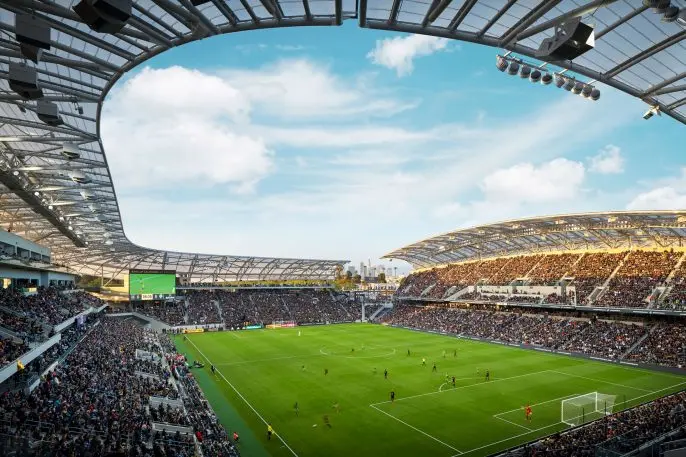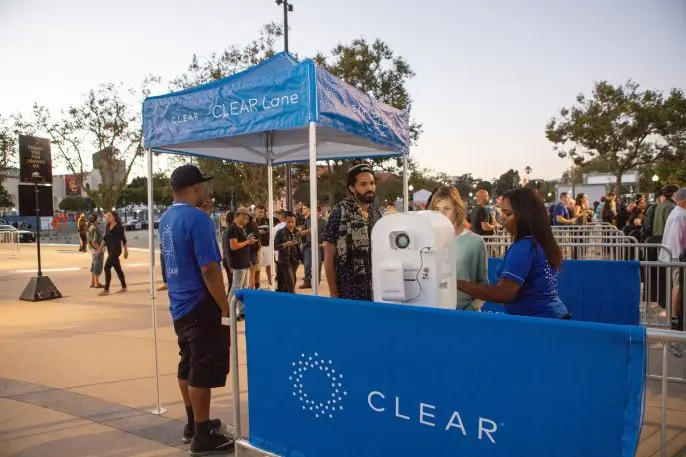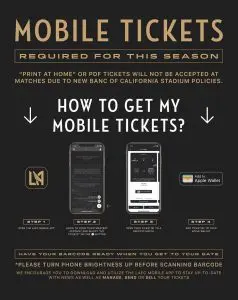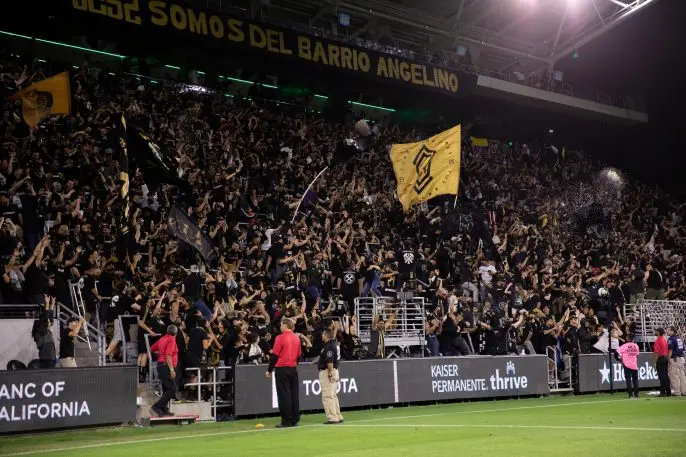When the players of the Los Angeles Football Club (LAFC) stepped on to the field to face off against the Seattle Sounders in their first Major League Soccer game in April 2018, they probably weren’t thinking about the fact that they were playing in the most expensive soccer-specific stadium in U.S. history. At $350 million, the Banc of California Stadium, designed by L.A.-based Gensler Sports, is a gleaming homage to soccer and the fans that love it. The stadium is easy to access, right in the heart of Los Angeles, near public transit, designed with frictionless entry in mind—and, even more important for boosters, no seat is more than 135 feet from the sidelines, which thrusts fans into the action.
“From the beginning, LAFC has focused on building an organization obsessed with what is new and next and forward,” says LAFC president and co-owner Tom Penn. Since they were building a stadium from the ground up, it gave them the opportunity to use technology to provide what Penn describes as “innovative first-class services to our fans and supporters.”

“Our ownership really wanted to have the best possible guest experience,” says Christian Lau, the vice president of information technology at LAFC. Since they were targeting millennial fans—”about 80% of our audience is between 18 and 34,” Lau says—that meant making sure the stadium had the technology that the fans wanted—and that it actually worked.
So they built a new fiber network from the ground up for use in the back of the house, making sure to futureproof the stadium as much as possible to avoid retrofitting technology for at least five years. They also created front-facing features like easy mobile ticketing, digital parking passes, a mobile app that fans want to download, and stadium-wide Wi-Fi that works so well fans can upload pics to Instagram while the game is being played. “It’s a great way for fans to be able to share the experience with people on the outside,” says Lau, who estimates about 44% of their customers are on the Wi-Fi network at any given time.
They are also using technology to make getting those fans into the stadium a seamless experience. They were the third Major League Soccer team to start using biometric scanning with biosecurity company Clear, which collects the data (LAFC and Ticketmaster have no access to it). They hope to expand Clear’s biometric verification to allow for quicker beer purchasing, too, a priority for any sports fan. “If you’re in the system, you go buy beer or another alcoholic product, and then we identify you in the system, you’re agent verified, and you actually pay at the same time,” says Lau.”So that transaction takes like a second.”

Now they are working on using Apple Pay, which is one of their partners, to make it easy for fans to place their beer and pizza orders at the snack bar ahead of time through Apple Business Chat. “You get your order number, you can walk up and grab it literally in one minute by the time you walk up,” says Lau, who notes the service is also available on Android and soon via the club’s app. “It’s very efficient, and customers are going to be very happy with it.”

How to beat the scalpers
One of their most recent innovations comes via Ticketmaster, which has worked with LAFC to create counterfeitproof ticketing. If you have gone to a pro sports event—or concert or festival or Ed Sheeran concert—there are always a few people outside selling tickets to the event or shilling them on craigslist. Unfortunately, not all of those tickets are real, and inevitably some sad sack forks over $50 and marches up to the stadium doors only to be told that the ticket is fake and the scammer is long gone with cash in hand. Counterfeiting is big business. The value of counterfeiting is estimated by the Organisation for Economic Co-operation and Development (OECD) to be close to $250 billion a year, which is a conservative estimate since it’s based on seizures and not the other fake goods in the market. (That number will most likely rise thanks to the trade war.)

To combat the fake ticket problem, Ticketmaster first started putting bar codes on tickets back in 1994. Typically each ticket has a unique code that is scanned at the gate. It can only be used once, and anyone trying to enter with the same code is flagged. The system also catches made-up codes. For the most part, the system works and only those with real tickets are allowed inside the stadium gates, although counterfeiters could get a real bar code and print it on every ticket and whichever purchaser got to the stadium first would be granted access, while everyone else was out of luck. The invention of bar-coded tickets also allowed for the advent of email tickets that arrive in your inbox in PDF form and, now, mobile tickets, which are used by LAFC. As ticketing technology has improved, so has counterfeiting technology, where digital tickets are captured with a screenshot and passed around. LAFC and Ticketmaster have a new weapon: tickets with changing bar codes.

In July, LAFC started using the SafeTix system developed by Ticketmaster. The technology uses a unique, identifiable mobile ticket with an encrypted bar code that automatically refreshes every few seconds, making them nearly impossible to counterfeit as they can’t be screengrabbed or photocopied and sold multiple times. SafeTix was used at select NFL training camps and in the NFL preseason before rolling out league-wide in September. The NHL will be leveraging SafeTix tech come October for its new season too. SafeTix isn’t just to prevent fraud, though. It’s part of an overarching program called Ticketmaster Presence, whicih not only monitors access to venues but also gives teams and stadiums access to fans, providing real-time insights and analytics and those “personalized fan experiences” that mean getting sent a beer coupon for your next visit or whatever the marketing geniuses think fans want. Ticketmaster is developing and exploring new features for Presence, including facial recognition technology through Blink Identity. Whatever they develop next, LAFC will undoubtedly be taking a look to see if it will work in their stadium and for their fans.

Correction: This article has been updated to clarify Clear’s use of data.
Recognize your brand’s excellence by applying to this year’s Brands That Matter Awards before the early-rate deadline, May 3.
